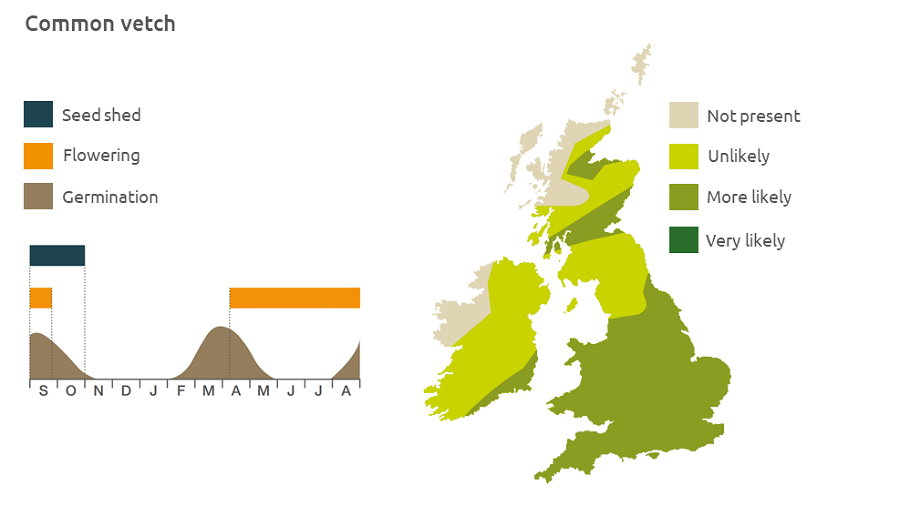- Home
- Knowledge library
- Distribution and biology of common vetch in the UK
Distribution and biology of common vetch in the UK
Common vetch is a broad-leaved weed that is often found in grassy margins. Find out how to identify and control it.
Overview
Common vetch (Vicia sativa) was once grown as a cultivated plant. It is found in grassy field margins, but may also be seen in arable crops, sometimes as cultivated forms where vetches form part of the cropping rotation. Common vetch usually germinates in autumn and overwinters; more rarely it is a summer annual. Undisturbed plants may be biennial. It is often seen in spring-sown crops where it can interfere with harvesting and seed can contaminate grain.
- It has value to biodiversity
Description
A scrambling dicotyledon, the stems grow to 20–120 cm in length. The leaves are divided into 3–8 pairs of oval leaflets and end in a tendril. The flowers are like those of a pea and occur in the last few leaf axils.
Key features
Young plant: The first true leaves are long and narrow with no leaflets.

Location and life cycle

Geographic distribution
Although it is widely found in lowland areas in most of the British Isles, in Ireland it is mainly confined to the east coast.
Soil type
It prefers dry and sandy soils.
Seed statistics
- Seed longevity: >5 years
- Seed weight: 100 mg
- Seeds/flower: 4–12
Management
Seedlings can be harrowed out, but once established it is not readily controlled except with hoeing.
For advice on herbicides, please speak with your agronomist or adviser.
When was this information last updated?
This page is based on content from the encyclopaedia of arable weeds publication. Since it was first released in 2008, the publication has been redesigned several times but not revised. However, it remains a good foundation for general information on the distribution and biology of weeds.

